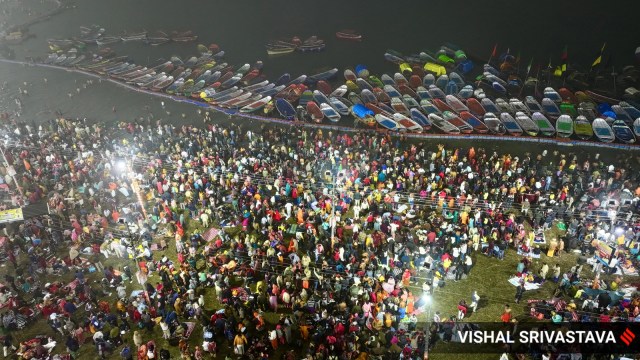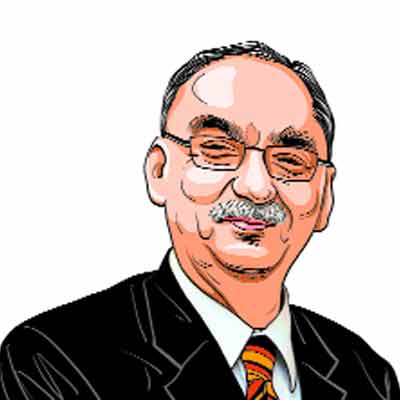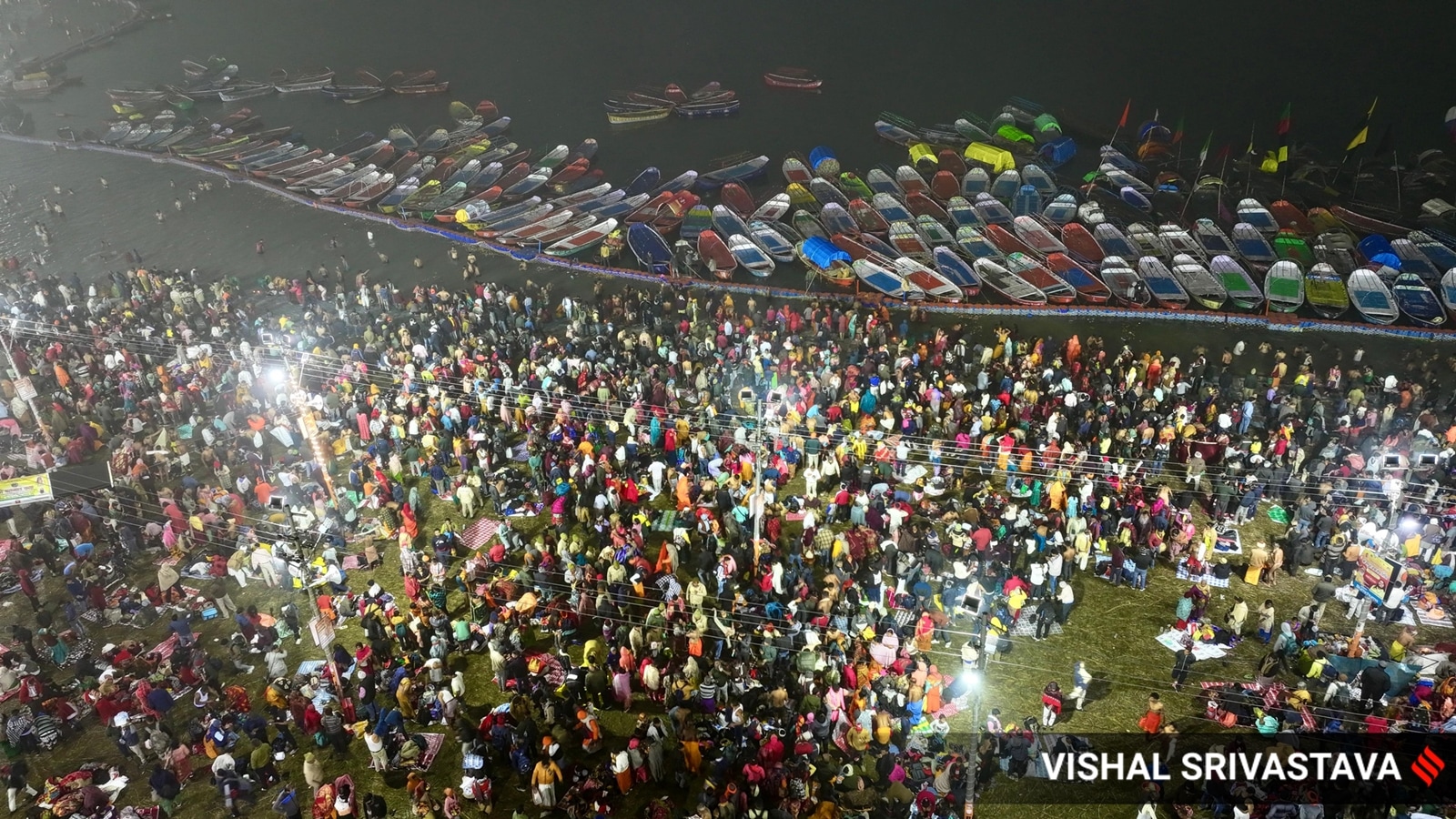

Feb 4, 2025 17:39 IST First published on: Feb 4, 2025 at 17:13 IST
Kailas Nath Katju, my grandfather, began writing his autobiography in December 1940. He was in Naini jail at the time, consequent to the Congress decision for its leaders to undertake individual satyagraha. In the autobiography, which has remained unpublished, he wrote a paragraph on the Kumbh Mela, which I quote in full because it conveys the feelings of a Hindu who goes to the Sangam as a pilgrim.
“Then the great Kumbh Mela came on in January 1918. The Kumbh Mela, regularly for the past thousands of years, held once in 12 years is a very special, solemn and sacred celebration in the month of Magh (January) and attracts millions of pilgrims. The sight on the Triveni grounds is a wonderful one and inspiring too. You see Hinduism in action, so to say. Pilgrims drawn from all over Northern India flock to the sacred confluence and for a whole month, lakhs of people live under canvas or under thatched huts. The Mela — the Kumbh — is a very ancient institution, and the Chinese traveller mentions one… he was present at, in the year 638 AD or nearabout — a particularly grand one — in which the then emperor, Harshavardhana gave away in gifts and alms all his accumulated treasures worth 120 million of rupees and the garments he was wearing. Verily and truly is the great Prayag Raj called the ‘Dandbhumi’ and ‘Tyagbhumi’ of India. When I go to the sacred Triveni, my mind goes into raptures and travels back to the ages and ages during which the sacred rivers have drawn countless millions of Hindus, as if by a magnet to their sacred waters. I hope and trust the Indian people will ever continue to be inspired by the life-giving waters of these rivers so holy in our long history.”
Story continues below this ad
In 1918, grandfather was 31 years old. In the decades that followed, he achieved great distinction in the legal profession and participated in the freedom movement as a faithful follower of Gandhi ji. After Independence, he occupied some of the country’s highest political offices. He returned to his karmabhumi, Allahabad (now Prayagraj), in 1962, from Bhopal where he was Madhya Pradesh’s chief minister; he lost his seat in the elections held that year. Four years later came the 1966 Kumbh Mela; he was 78 years old, suffering from numerous ailments. On the morning of a minor “nahan” day, his driver came to me and said: “Babu ji is going to the Sangam and he has said that you will accompany him”. I was 14 years old.
Our car was stopped at the first car park. From there, it was over three kilometres to the Sangam. Grandfather and grandson, along with the other lakhs of pilgrims, made their way to the Triveni. On the way to and after a dip in the life-giving waters of the Sangam, all the way back to the car, grandfather related to me the history of the what he called the “Hindu race”, of Kumbh Melas and of India. The multitudes in the Mela grounds, the overwhelming number of whom were clad in dhotis and saris, were inspiring him and through his words, he clearly wanted me, his youngest paternal grandson, to gain the unchanging conviction that these were his own people, that he must never consider himself distinct from them and must always serve their interests. Two years later, grandfather was gone but the memory of that visit to the Sangam and grandfather’s words have always remained with me.
India has metamorphosed in the decades since the 1966 Kumbh — so has the Kumbh Mela. It may be a pilgrimage for crores of devout Hindus still but it is also a part of the government’s vision of promoting religious tourism. This was the first Kumbh Mela organised under the ruling dispensation which is in power both in Delhi and Lucknow. It would therefore be appropriate to examine the connection between pilgrimage or (Tirth) and religious tourism. That the Narendra Modi government is committed to enhancing religious tourism is borne out by the Ministry of Tourism’s account of the PRASAD (Pilgrimage Rejuvenation And Spiritual Augmentation Drive) scheme. The Ministry states that the “This scheme focuses on developing and identifying pilgrimage sites across India for enriching the religious tourism experience. It aims to integrate pilgrimage destinations in a prioritised, planned and sustainable manner to provide a complete religious tourism experience. The growth of domestic tourism hugely depends on pilgrimage tourism”.
Story continues below this ad
There can be no quarrel with the government’s objective of improving facilities, including access, communications, sanitation and health, at the sacred places of all the people of India. There is also no problem with the government incurring expenditure in assisting the organisation of such occasions such as the Kumbh. Indeed, it is the duty of the government to ensure the maintenance of law and order and the orderly conduct of such religious events in cooperation with spiritual and religious leaders. The problem arises when the concepts of pilgrimage and tourism are mixed together. Why?
most read
The object of pilgrimage is spiritual and a pilgrim undertakes its rigours for, as grandfather noted, “sacred” purposes. Indeed, it can be asserted that if a pilgrim seeks to bypass, through his money or official power, the difficulties which an ordinary pilgrim experiences, then he is not a pilgrim at all. At these places and before a deity in a temple, there should be no discrimination on any account. Thus, the practice of designated places in the Mela ground for officials and the rich — as it was done in this Kumbh Mela but began on a smaller basis earlier — goes against the grain of pilgrimage and is part of a tourism whose objective is profit.
The news coming from this Kumbh Mela is that it promoted religious tourism in a big way. This was right from tent cities where the cost of a tent went up to thousands of rupees per day to food courts where pizza outlets belonging to international brands and well-known coffee shops were present for the well healed. They could not obviously tolerate the traditional fare which has been available at the Kumbh Mela for centuries.
The fact is that Hindu pilgrimage and religious tourism are oil and water.
The writer is a former diplomat


